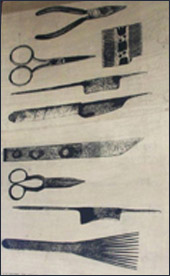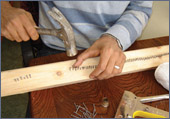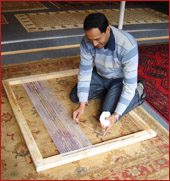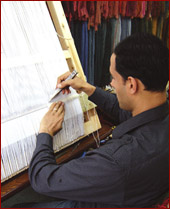



Like a map or a book, every Oriental Rug has a tale to tell, where its ‘Journey of Weave’ is recorded and illustrated.
Rug weaving is one of the world’s most ancient of crafts, where decorative artistic expression, durable usability and protection from the elements, go hand in hand. Cited in the Old Testament and Homer’s Iliad, weaving skills have been passed down through the generations of apprenticeships, where the world’s oldest known hand-woven carpet is the Pazyryk Rug, originally dating back to circa. 500 BC.
WEAVE FORM & STRUCTURE
A hand-woven rug is a testament to the myriad of skills involved in its creation. From the sheep, camel and goat rearers, silk worm cultivators, wool shearers, yarn carders, washers and spinners, rug loom builders and yarn dyers, to the rug weavers, whose skills bring all these aspects together to create a unique piece of hand-woven rug craftsmanship.
Hand-woven weavings are crafted with a warp and weft foundation on a wooden rug loom. The loom frame is constructed with a row of wooden pegs inserted top and bottom, to provide the correct tension and shaping for the proposed weaving. Next, yarn is vertically attached to the pegs across the width of the loom forming parallel warp threads, strung taut like a harp.
The weaver then hand-weaves and/or rug-knots yarns vertically across these warp threads to form the weft rows of weave. These interlaced warp threads and weft rows form the ‘foundation’ and create the pattern and design of the piece. Rug weaving materials include wool, cotton, mohair and silk yarns, as well as camel, horse and goat hair. Upon completion, the weaving is cut from the rug loom across the warp threads that now form the fringe ends.
Like the musical notes on a stave, each knot the weaver creates brings a weaving to life. Here, the weaver uses a variety of bespoke tools essential for the creation of a hand-woven piece.
A Master Weaver's tools are bespoke-made to fit his hand's width and fingers' length. They include: a ‘heddle rod’ to brace the warp threads to maintain weave tension, the ‘Sanara’ – a personalised steel hook to tie rug knots, a knife for cutting the yarn of tied knots, a steel comb for packing down the weft rows once woven; a pair of shears for trimming the pile, and a steel comb to separate out the yarn after each row of knots is completed, to help tighten the weave and clarify the design.
The images detailed opposite, show Anas ~ The Oriental Rug Gallery Ltd's Rug Specialist and fourth-generation Master Rug Craftsman, 'threading up the weft threads' on a bespoke-designed traditional, wooden-framed rug loom and beginning the hand-weaving and rug-knotting of the UK’s first-ever hand-woven and rug-knotted Haslemere Coat of Arms Rug Weaving. An original, hand-made print created by renowned multi-skilled Surrey artist: Andrew Morrison below, highlights Anas' traditional, Master Rug Craftsman tools.


